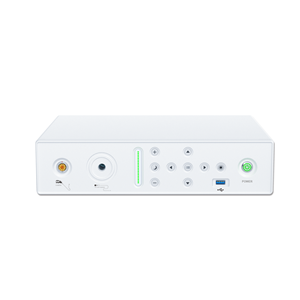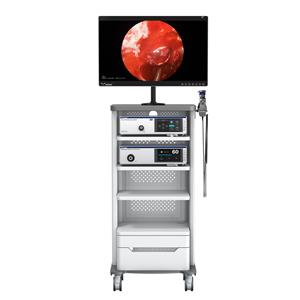【Gynecological Endoscopy】Application of Laparoscopy in the Diagnosis and Treatment of Ectopic Pregnancy
Ectopic pregnancy is one of the most common acute abdomens in obstetrics and gynecology and the leading cause of death among women in the first trimester. For those with ruptured pregnancy and typical symptoms, the diagnosis is not difficult, but with the increasing number of women with ectopic pregnancy who require fertility preservation, early diagnosis and reasonable treatment are particularly important. In recent years, laparoscopic surgery has been widely used in the diagnosis and treatment of gynecological diseases.
Surgical methods: tracheal intubation was used for general anesthesia, and the head was lowered and the foot was taken high. For the laparoscope and its supporting instruments, a small incision of 10 mm at the lower edge of the umbilicus was taken, and CO2 gas was injected into the pneumoperitoneum after puncture, so that the intra-abdominal pressure reached 13-15 mmHg. A laparoscope was placed to routinely explore the pelvic and abdominal lesions, and the blood and clots in the cavity were aspirated. Two puncture points were made in the lower abdomen at the level of McBurney's point, and 10mm and 5mm trocar were penetrated respectively. The surgical method is decided according to the lesion site, type and fertility requirements.
①Salpingectomy: Lift the ipsilateral fallopian tube with non-invasive grasping forceps, bipolar coagulation, electric cut of the ipsilateral mesosalpinx up to the fimbria, coagulation and electric cut off of the fallopian tube at the uterine angle, and the excised fallopian tube is sent for pathological examination.
(2) Fenestration of the fallopian tube: fix the fallopian tube with non-invasive forceps, cut the wall of the fallopian tube about 1-2 cm along the longitudinal axis of the fallopian tube with a monopolar electroacupuncture at the most prominent part of the pregnancy mass, and gently remove the cavity with grasping forceps For internal pregnancy and blood clots, the pelvis was flushed with normal saline, the bleeding point was electrocoagulated to stop bleeding, and the stump incision was not sutured.
③Extrusion of tubal fimbriae: After the ampulla of the fallopian tube is clamped with non-invasive grasping forceps, the pregnancy and blood clots are extruded from the fimbriae under the microscope, and the fimbriae is washed with normal saline.
④Partial oophorectomy: Part of the ovary is removed with an electric knife, the wound is electrocoagulated to stop bleeding, and the wound is sutured or not. All patients without salpingectomy received local injection of methotrexate (MTX) 20 mg. After the operation, the blood in the cavity was removed, and the pelvis and abdominal cavity were washed repeatedly and thoroughly with normal saline.
Ectopic pregnancy (commonly known as ectopic pregnancy) refers to the implantation of a fertilized egg outside the uterine cavity, mainly including tubal pregnancy, ovarian pregnancy, cervical pregnancy and abdominal pregnancy. When the disease has typical symptoms such as menopause, irregular vaginal bleeding and abdominal pain, the diagnosis can generally be confirmed by combining medical history, physical signs, blood HCG and B-ultrasound, and the diagnostic coincidence rate can reach 95% to 98%. However, for patients with ectopic pregnancy with atypical symptoms and no obvious signs in the early stage, B-ultrasound and blood HCG alone cannot make a diagnosis. Laparoscopic direct vision diagnosis can comprehensively and accurately evaluate the lesion site, the size of the gestational sac, the degree of bleeding, the degree of surrounding tissue damage, and the condition of the pelvic and abdominal cavity, and provide a basis for further surgical plans. Its advantages are: ① It can clearly diagnose the vast majority of ectopic pregnancy cases;
②It integrates diagnosis and treatment, and can perform laparoscopic ectopic pregnancy foci resection at the same time;
③ Other pelvic lesions such as adhesions, ovarian cysts, uterine fibroids, etc. can be discovered and treated at the same time;
④ Direct local injection of MTX into the lesion;
⑤Compared with laparotomy, the pregnancy rate of tubal recanalization after operation is higher.
The method of laparoscopic surgery can be determined according to factors such as the lesion location, degree, and fertility preservation. For those with large lesions, severe surrounding tissue destruction and adhesion, and no fertility requirements, salpingectomy can be performed. For patients with smaller lesions, less bleeding, and wish to preserve fertility, tubal fenestration is an option. Laparoscopic tubal fenestration is now considered to be the standard conservative procedure for the treatment of tubal pregnancy.




